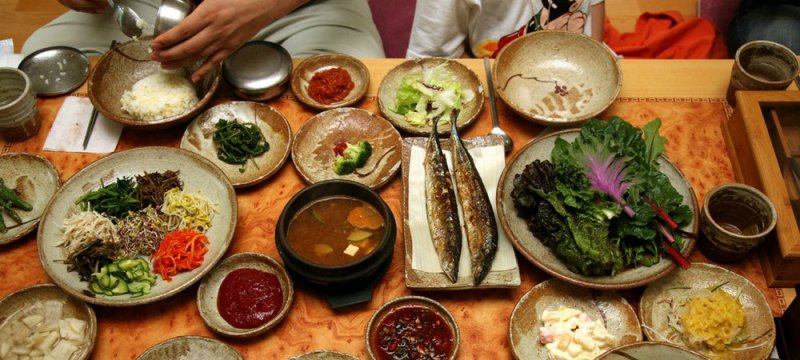If you’ve ever eaten at a Korean restaurant before, you’ve probably noticed the small plates of pickled or fermented vegetables, noodles and seafood placed on the table at the beginning of every meal. These are Korean side dishes known as “banchan,” and they serve as toppings and condiments that complement the main dish. There are usually four or five plates for any given meal. Kimchi is often served as a side dish to use as a spicy topping. Banchan arrives before the main course, and while it can be nibbled on, it’s best to save these little sides until the bowls of rice are brought out. Knowing the different kinds of banchan and how to make them will allow you to create some very extravagant dishes at home.
Banchan you should know
There are many different kinds of banchan. Here are some of the most popular and common types and how to make these sides at home.
Oi Sobagi (Cucumber Kimchi)

Oi Sobagi is very similar to regular kimchi, with the only difference being that cucumber is the base instead of cabbage. The seasonings are generally the same, using ingredients such as red pepper flakes, garlic and ginger.
Sigeumchi Namul (Seasoned Spinach)
A simple dish that tastes fantastic, this recipe for sigeumchi namul calls for blanching spinach and mixing it with seasonings such as garlic, scallions and sesame oil. There are multiple variations to this recipe, in case you want to something spicier or prefer the mild touch.
Kongnamul (Seasoned Soybean Sprouts)

Soybean sprouts are the base of this popular Korean side dish. The seasonings are fairly basic — sesame oil, garlic and scallions, to name a few — and the end result is a classic banchan dish that provides a nice crunch.
Japchae (Stir-Fried Glass Noodles)
Sweet potato starch noodles, beef, shitake mushrooms and traditional Korean seasonings make up this delicious banchan dish. If you want something lighter, you can forego the beef and add additional veggies for a healthier alternative.
Ojingeochae Muchim (Dried Squid)

This recipe takes dried squid strips, a common staple in Korean cuisine, and blanches them with boiling water to soften them up and remove excess salt. The strips are then added to a very spicy sauce made of traditional Korean ingredients and heated in a saucepan.
Myulchi Bokkeum (Dried Anchovies)
Sweet and spicy, this dried anchovies dish is sure to be a hit. The sauce is very simple — just olive oil, sugar, garlic, hot pepper paste, sesame oil and sesame seeds. Combined with the saltiness of the anchovies, this side provides all sorts of flavors.
Danmuji (Pickled Radish)

Daikon radishes that have been pickled make for not only a delicious topping, but an aesthetically pleasing one — the shape of the radish and its post-pickling bright yellow color are sure to catch the eye. This recipe for danmuji will leave you with a unique tasting pickle that will elevate your Korean dishes to the next level.
